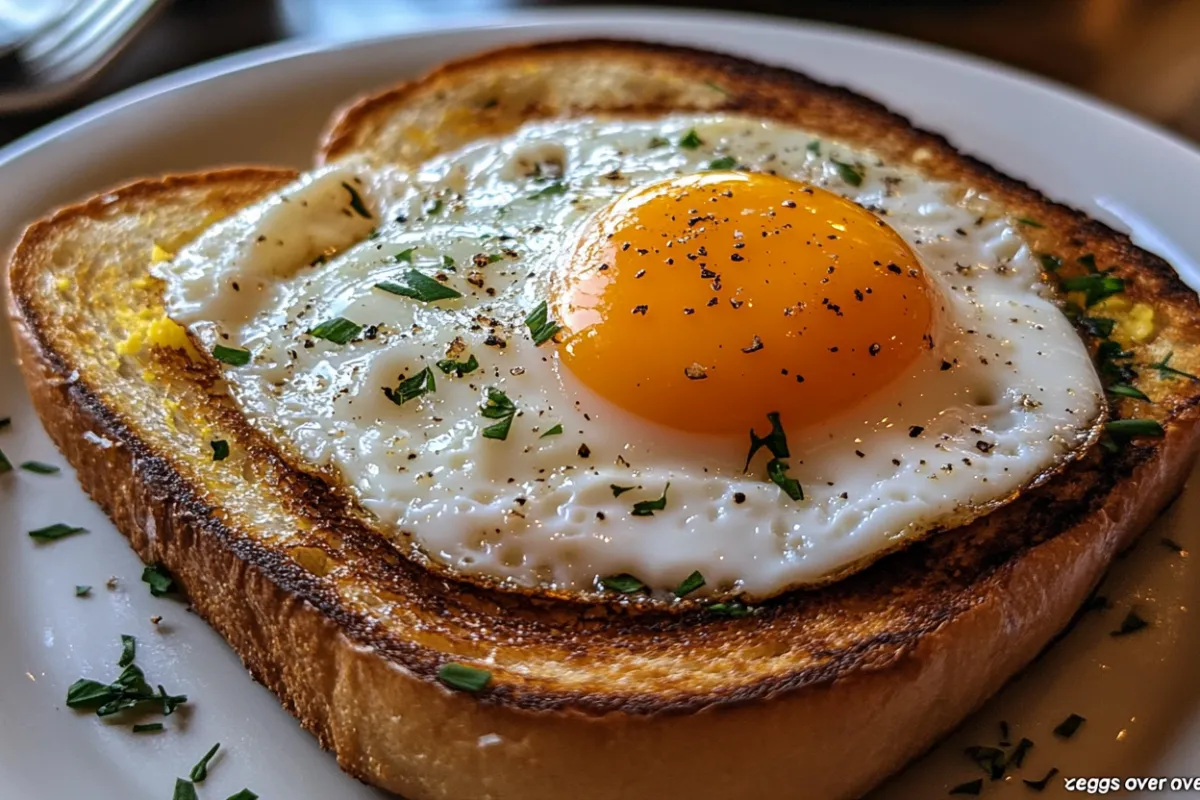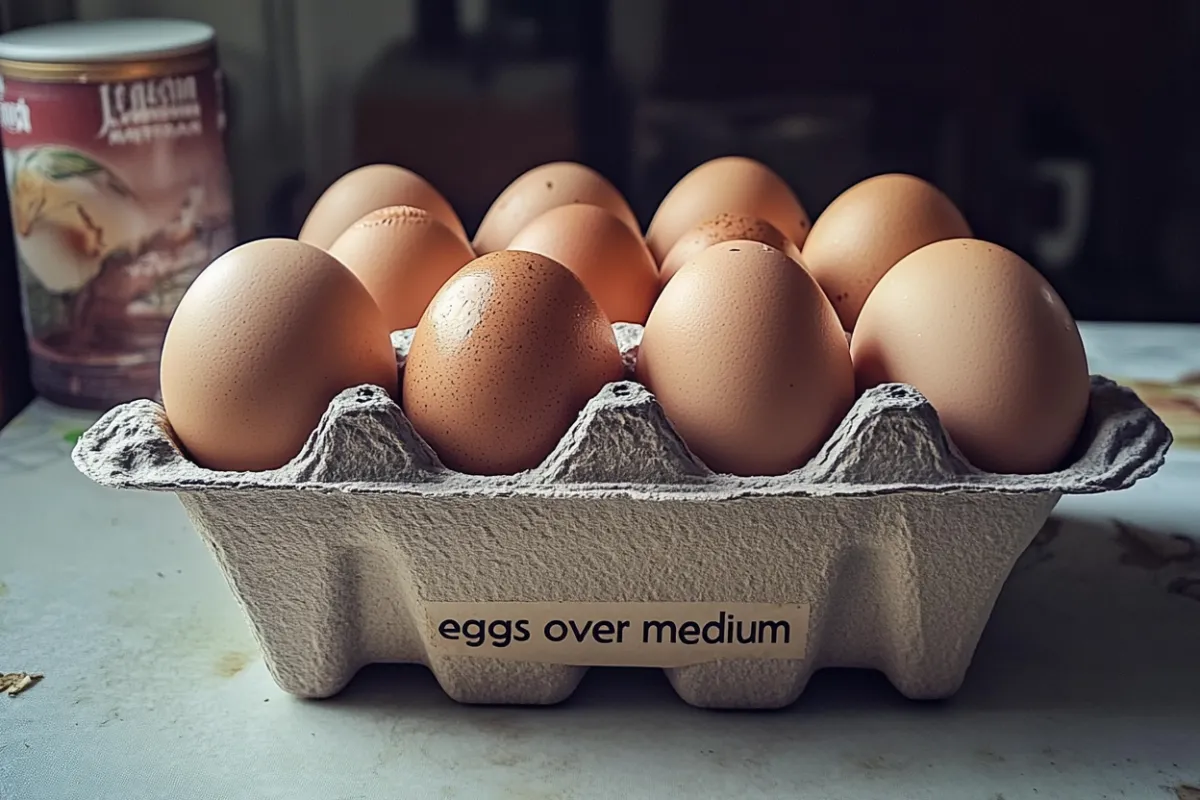Fried eggs are a breakfast staple worldwide, but the level of doneness can vary greatly. Whether you’re enjoying a hearty breakfast or crafting the perfect sandwich, knowing how to get your eggs just right is crucial. One popular choice for fried eggs is eggs over medium, but what exactly does this mean?
In this comprehensive guide, we’ll explore the meaning of eggs over medium, how to cook them to perfection, and why they are a favorite among egg lovers. We’ll also dive into the science behind frying eggs, provide tips for ordering them at restaurants, and answer some frequently asked questions. By the end, you’ll have mastered everything there is to know about this delicious style of egg preparation.
Introduction to Eggs Over Medium
When it comes to fried eggs, the term over medium refers to a specific level of doneness. Eggs are typically fried on one side and then flipped to cook on the other. With eggs over medium, the whites are fully cooked, but the yolk remains only slightly runny. This creates a creamy texture without the overly runny yolk found in over easy eggs, or the completely firm yolk of over hard eggs.
Knowing how to achieve the perfect over medium egg requires a delicate balance of heat, time, and technique. This style is perfect for those who want a yolk that’s neither too runny nor completely set, striking a middle ground that satisfies a wide range of palates.
For those interested in understanding the differences between over easy, over medium, and over hard eggs, SproutMonk provides a detailed comparison to help you grasp the nuances of each.
What Does ‘Eggs Over Medium’ Mean?
The term eggs over medium refers to the stage of doneness where the egg white is fully set, and the yolk is partially cooked, with a soft but not overly runny center. This texture makes over medium eggs ideal for those who want a bit of richness from the yolk but don’t enjoy it completely runny.
To prepare eggs over medium, you start by frying the eggs on one side until the white is nearly set. Then, the egg is gently flipped, allowing the other side to cook for a short period—just enough to firm up the yolk slightly while keeping its core soft. This technique strikes a balance between the extremes of over easy and over hard eggs, making it a popular choice in diners and homes alike.
For more on how to perfect this cooking style, check out the comprehensive guide from Kitchn, which breaks down the steps to achieving the perfect over medium egg.
The History and Popularity of Fried Eggs
Fried eggs have been enjoyed for centuries across various cultures. While there are many ways to fry eggs—sunny side up, over easy, over medium, and over hard—the way people prefer them often depends on regional culinary traditions. In the U.S., diners often offer all four styles, allowing customers to choose their desired doneness.
Historically, the method of frying eggs dates back to ancient civilizations, where eggs were a readily available and nutritious source of protein. As food preparation methods evolved, frying became a popular way to enhance the texture and flavor of eggs. The technique of flipping eggs to cook both sides likely developed as cooks experimented with different methods to achieve varying yolk consistencies.
Today, eggs over medium have become a go-to choice for those who prefer a balance between a soft yolk and fully cooked whites, making it a popular option on breakfast menus.
How to Cook the Perfect Eggs Over Medium

Cooking eggs over medium is a skill that requires attention to detail, but once mastered, it becomes second nature. Here’s a step-by-step guide to achieving perfectly cooked eggs every time.
Step 1: Heat the Pan
Start by heating a non-stick skillet over medium heat. Add a small amount of butter or oil to the pan to prevent the eggs from sticking.
Step 2: Crack the Eggs
Carefully crack the eggs into the pan without breaking the yolks. Allow the whites to cook undisturbed for about 2-3 minutes, or until they start to set.
Step 3: Flip the Eggs
Once the whites are mostly cooked and the yolks are still soft, gently flip the eggs using a spatula. Be careful not to break the yolk during this process.
Step 4: Cook to Desired Doneness
Cook the flipped eggs for another 1-2 minutes. For eggs over medium, aim for a slightly firm yolk that remains soft in the center.
Step 5: Serve Immediately
Remove the eggs from the pan and serve immediately. The result should be fully cooked whites with a creamy yolk that’s just set enough to hold its shape.
Differences Between Over Easy, Over Medium, and Over Hard
To fully understand eggs over medium, it’s important to compare them with other levels of doneness in fried eggs:
- Over Easy: The whites are fully cooked, but the yolk remains runny.
- Over Medium: The whites are cooked, and the yolk is partially set but still creamy.
- Over Hard: Both the whites and the yolk are fully cooked, with the yolk being completely firm.
The key difference between these styles is the level of yolk doneness. For over easy, the yolk remains mostly liquid, while over hard eggs have a fully solidified yolk. Over medium eggs strike the perfect balance for those who want a bit of both.
For more insights into the differences between these cooking styles, Sauder’s Eggs offers a comprehensive explanation of various levels of egg doneness.
Nutritional Information of Eggs Over Medium
Eggs are a powerhouse of nutrition, and the way you cook them can slightly affect their nutritional value. Here’s a breakdown of the key nutrients found in eggs over medium:
- Calories: Approximately 70 calories per large egg
- Protein: 6 grams of high-quality protein
- Fat: 5 grams, with 1.5 grams of saturated fat
- Vitamins and Minerals: Rich in vitamin D, B12, selenium, and choline
The cooking method of frying eggs over medium retains most of the egg’s natural nutrients, making it a healthy choice. However, the use of added fats, such as butter or oil, may slightly increase the calorie count.
Common Uses of Eggs Over Medium
Eggs over medium are incredibly versatile and can be used in a variety of dishes. Some popular options include:
- Breakfast Plates: Serve with toast, bacon, or hash browns for a classic breakfast.
- Sandwiches: Add to a breakfast sandwich with cheese, bacon, or sausage for added richness.
- Salads: Top a fresh salad with eggs over medium for a boost of protein and a creamy yolk that acts as a dressing.
The slightly runny yolk adds flavor and texture to many dishes, making eggs over medium a popular choice for breakfast lovers.
The Science Behind Cooking Eggs Over Medium
When you cook eggs over medium, a series of chemical reactions take place. As the egg white cooks, its proteins coagulate, transforming from a translucent liquid into a solid white. The yolk, on the other hand, undergoes partial coagulation in over medium eggs, resulting in a yolk that’s set but still creamy.
Why Temperature Matters
Cooking eggs at the right temperature is crucial. Too high a heat can cause the whites to overcook or become rubbery, while too low a heat might leave the yolks too runny. Medium heat allows for a controlled cooking process that ensures both the whites and yolks reach the desired doneness.
The role of fats, such as butter or oil, in the cooking process also influences the texture of the eggs. Fats help prevent the eggs from sticking to the pan and add flavor to the finished dish.
Perfecting the Timing for Eggs Over Medium
Timing is everything when it comes to cooking eggs over medium. The key to achieving the perfect consistency is allowing the eggs to cook long enough for the whites to set while ensuring the yolk retains its soft, creamy center.
Key Timing Tips:
- Cook the first side for about 2-3 minutes, until the whites are mostly set.
- Flip the egg gently and cook the second side for 1-2 minutes, depending on how firm you want the yolk.
- Avoid overcooking the yolk, as this will result in over hard eggs.
With practice, you’ll learn to recognize when the eggs have reached the perfect over medium doneness.
FAQs: People Also Ask About Eggs Over Medium
- What does ‘eggs over medium’ mean?
- Eggs cooked with fully set whites and a slightly runny yolk.
- What’s the difference between over easy and over medium?
- Over easy eggs have runny yolks, while over medium eggs have a firmer yolk that’s still creamy.
- How do you cook eggs over medium perfectly?
- Cook the eggs on one side until the whites are set, then flip and cook the other side for 1-2 minutes for a firm but creamy yolk.
- Are eggs over medium healthy?
- Yes, they provide a good source of protein, vitamins, and minerals while being relatively low in calories.
- Can eggs over medium be used in recipes that call for other types of fried eggs?

